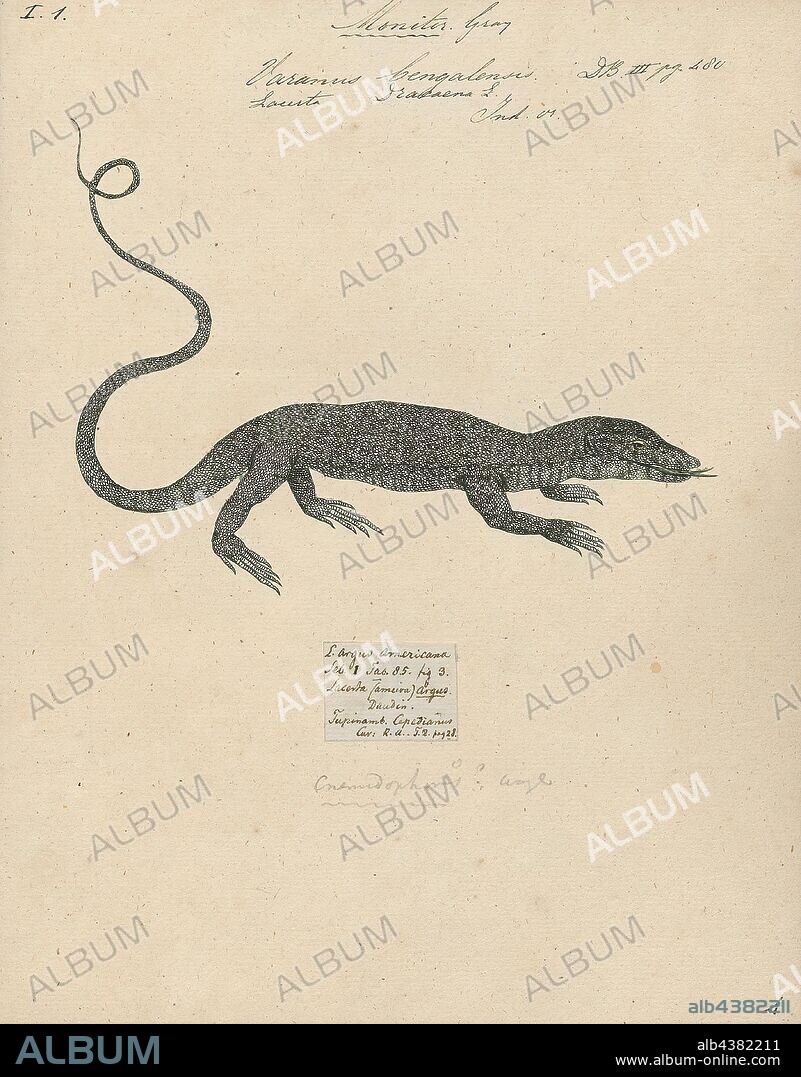alb4382211
Varanus bengalensis, Print, The Bengal monitor (Varanus bengalensis) or common Indian monitor, is a monitor lizard found widely distributed over the Indian Subcontinent, as well as parts of Southeast Asia and West Asia. This large lizard is mainly terrestrial, and its length can range from about 61 to 175 cm from the tip of the snout to the end of the tail. Young monitors may be more arboreal, but adults mainly hunt on the ground, preying mainly on arthropods, but also taking small terrestrial vertebrates, ground birds, eggs and fish. Although large monitors have few predators apart from humans who hunt them for meat, younger individuals are hunted by many predators., 1700-1880.

|
Ajouter à une autre Lightbox |
|
Ajouter à une autre Lightbox |



Avez-vous déjà un compte? S'identifier
Vous n'avez pas de compte ? S'inscrire
Acheter cette image.
Sélectionnez l'usage:

Légende:
Voir la traduction automatique
Varanus bengalensis, Print, The Bengal monitor (Varanus bengalensis) or common Indian monitor, is a monitor lizard found widely distributed over the Indian Subcontinent, as well as parts of Southeast Asia and West Asia. This large lizard is mainly terrestrial, and its length can range from about 61 to 175 cm from the tip of the snout to the end of the tail. Young monitors may be more arboreal, but adults mainly hunt on the ground, preying mainly on arthropods, but also taking small terrestrial vertebrates, ground birds, eggs and fish. Although large monitors have few predators apart from humans who hunt them for meat, younger individuals are hunted by many predators., 1700-1880
Crédit:
Album / quintlox
Autorisations:
Taille de l'image:
3654 x 4674 px | 48.9 MB
Taille d'impression:
30.9 x 39.6 cm | 12.2 x 15.6 in (300 dpi)
Mots clés:
ALIMENT: VIANDE • CHASSE (POURSUITE) • EMPREINTE • GENS • POISSON • POISSONS • POISSONS, PLUSIEURS • VARAN • VIANDE


 Pinterest
Pinterest Twitter
Twitter Facebook
Facebook Copier le lien
Copier le lien Email
Email
